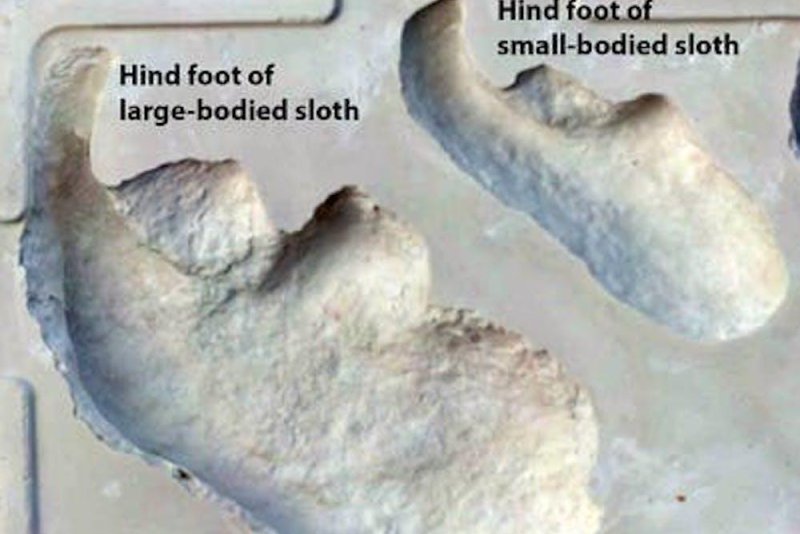Scientists found human prints inside the prints of sloths, evidence of tracking behavior. Photo by David Bustos/National Park Service
April 26 (UPI) -- Ancient footprints have offered researchers the rare opportunity to study an early North American hunting expedition. The footprints, discovered in the compacted sands of a dry lakebed in New Mexico's White Sands National Monument, tell the story of a group of hunters and a startled giant sloth.
At the end of the last ice age, as early humans spread across North America, they set their spears on the continent's megafauna, mammoths, boars, wolves, lions and sloths. The signatures of these hunts are few and far between, but each discovery, like the latest at White Sands, offers researchers insights into how early humans killed their dinner.
Now dry and sandy, the flats of White Sands were once host to a large lake. But as the climate warmed at the end of the last ice age, the lake shrank, leaving behind dunes and salt flats that only occasionally held water. The humans and animals that trekked across these muddy flats between 15,000 and 10,000 years ago left behind prints that remain preserved just beneath today's sandy surface.
The newly discovered prints suggest early humans stalked the sloth carefully, before one hunter distracted the animal as another dealt the deadly blow.
Sloth prints found without nearby human prints tended to follow a straight line, but when researchers found human prints close by, they noticed the sloth prints begin to take on a zigzag pattern, evidence of evasion. Researchers also found human footprints inside sloth prints, as if these early hunters were adopting the perspective of the sloth, trying to predict its next move.
In their new paper on the novel prints, published this week in the journal Science Advances, researchers described so-called flailing circles, evidence of the sloth's last-ditch attempt at self-defense.
The circles, scientists argue, were made as the sloth dug in with its hind legs and violently swung its fore limbs and claws around in a sweeping motion to keep the hunters at bay.
"What would convince our ancestors to engage is such a deadly game? Surely the bigger the prey, the greater the risk?" researchers wrote in The Conversation. "Maybe it was because a big kill could fill many stomachs without waste, or maybe it was pure human bravado."
All of North America's megafauna disappeared shortly after the end of the last ice age, but researchers can't agree on whether climate change or humans were the primary cause of their demise.
"Our data confirms that human hunters were attacking megafauna and were practiced at it," researchers wrote. "Unfortunately, it doesn't cast light on the impact of that hunting. Whether humans were the ultimate or immediate cause of the extinction is still not clear."















